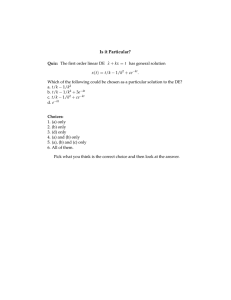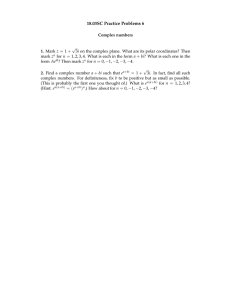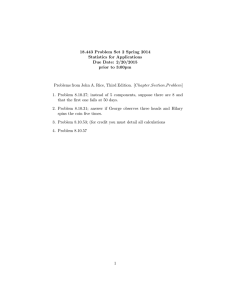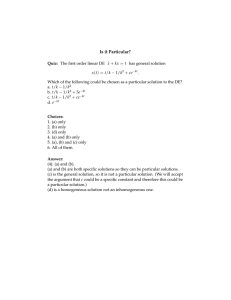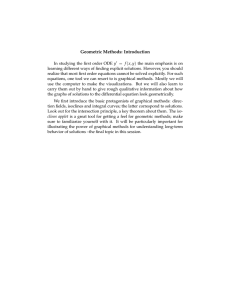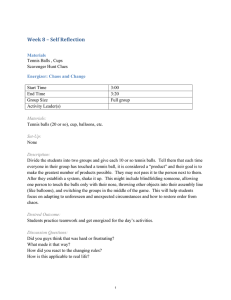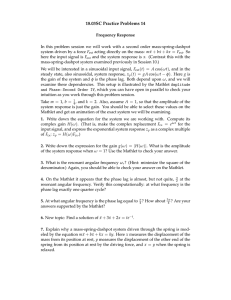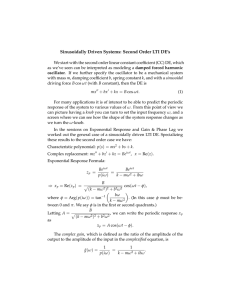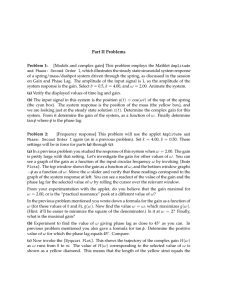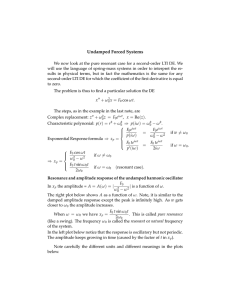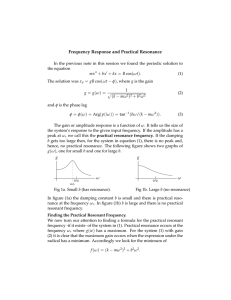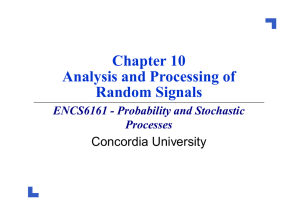Introduction
advertisement
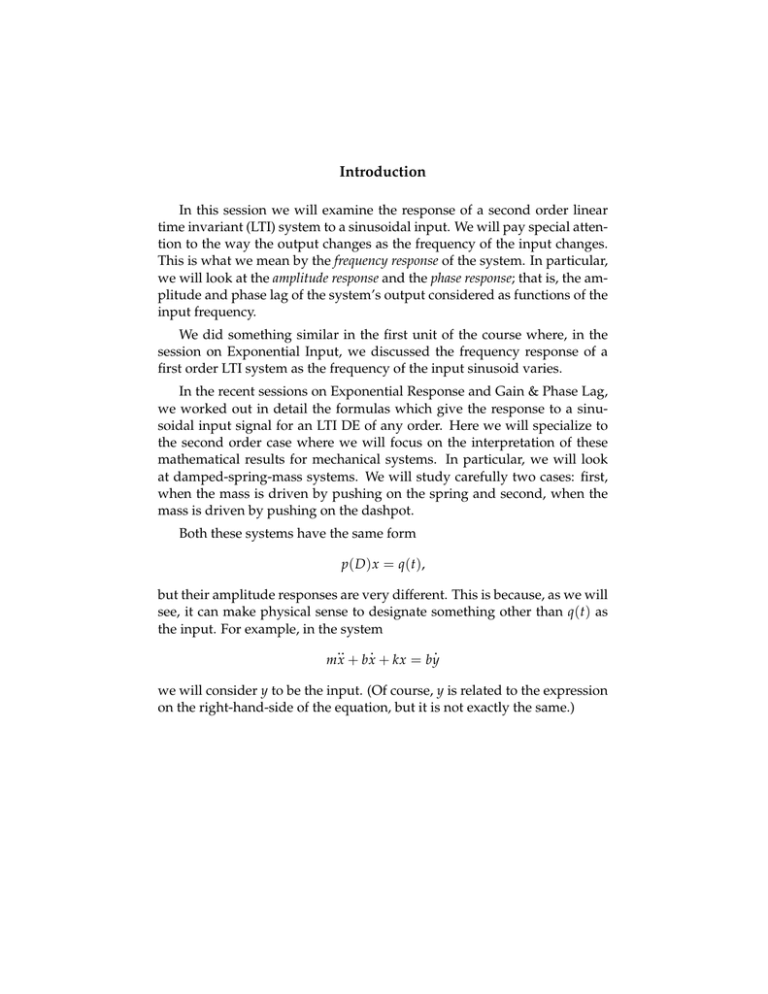
Introduction In this session we will examine the response of a second order linear time invariant (LTI) system to a sinusoidal input. We will pay special atten­ tion to the way the output changes as the frequency of the input changes. This is what we mean by the frequency response of the system. In particular, we will look at the amplitude response and the phase response; that is, the am­ plitude and phase lag of the system’s output considered as functions of the input frequency. We did something similar in the first unit of the course where, in the session on Exponential Input, we discussed the frequency response of a first order LTI system as the frequency of the input sinusoid varies. In the recent sessions on Exponential Response and Gain & Phase Lag, we worked out in detail the formulas which give the response to a sinu­ soidal input signal for an LTI DE of any order. Here we will specialize to the second order case where we will focus on the interpretation of these mathematical results for mechanical systems. In particular, we will look at damped-spring-mass systems. We will study carefully two cases: first, when the mass is driven by pushing on the spring and second, when the mass is driven by pushing on the dashpot. Both these systems have the same form p ( D ) x = q ( t ), but their amplitude responses are very different. This is because, as we will see, it can make physical sense to designate something other than q(t) as the input. For example, in the system .. . . mx + bx + kx = by we will consider y to be the input. (Of course, y is related to the expression on the right-hand-side of the equation, but it is not exactly the same.) MIT OpenCourseWare http://ocw.mit.edu 18.03SC Differential Equations�� Fall 2011 �� For information about citing these materials or our Terms of Use, visit: http://ocw.mit.edu/terms.
